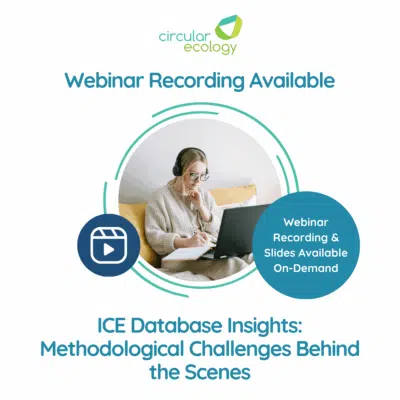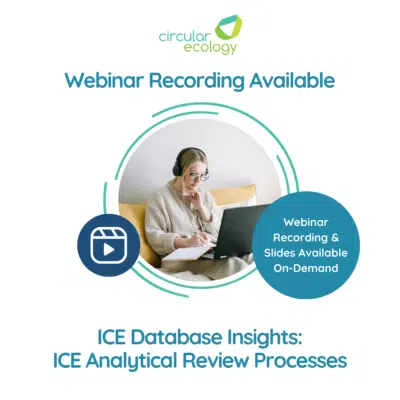An Environmental Product Declaration, or EPD, is a document that can be used internationally to demonstrate the environmental performance or impact of any product or material over its lifetime
Environmental Product Declarations

Obtaining an EPD for your product or material helps:
- Transparency: EPDs provide transparent and credible information about the environmental performance of a product. This transparency can help consumers and other stakeholders make informed decisions about your products.
- Market Differentiation: An EPD can differentiate your product to an increasingly environmentally aware audience.
- Regulatory Compliance: In some regions or industries, there are regulatory requirements or incentives for disclosing environmental impacts. Developing EPDs can help you comply with these regulations and demonstrate compliance to relevant authorities.
- Product Improvement: The results of an EPD can help you analyse potential energy hotspots within the production/supply of a product, giving you insight into areas to target improvements.
In summary, an EPD serves as a comprehensive tool for communicating the environmental performance of a product, meeting regulatory requirements, improving supply chain sustainability, and responding to customer demands for transparency and sustainability.
What types of EPD do we offer?
- Cradle-to-Gate: This covers the raw material extraction and manufacturing stages of a product and is the minimum level required for an EPD.
- Cradle-to-Grave: This covers the extraction of raw materials and manufacturing of the product and also any impacts associated with the use of the product and the disposal at the end of the product life.
- Cradle-to-Gate with Options: This option includes the the raw material extraction and manufacturing stages and also selected end of life modules.
The most widely followed reporting standard in the field of EPDs is EN15804. By providing the categories under which construction projects must be assessed, understanding this standard is essential for the production of any rigorous and verifiable EPD as we discuss in this article. We offer the ability to cover all lifecycle stages required as well as all environmental indicators.

What does a typical EPD process involve?
- Preliminary Meeting to discuss and agree upon the scope and boundaries of the assessment, data requirements & timelines for the process.
- Data Collection of product information and any available supporting primary data.
- Life Cycle Assessment of the product will be conducted according to the relevant standards.
- Background Report of the results to accompany the EPD and support any statements or environmental claims.
- Third Party Verification is required in order to publish an EPD to ensure accuracy and completeness.
- Publication of the EPD by a program operator who will process and register the EPD. This has a lifetime of 5 years before requiring to be revalidated.
Please use the form below if you would like to reach out to us regarding these services:
Webinar Recap: ICE Insights: Methodological Challenges Behind the Scenes
Circular Ecology hosted the fourth webinar in the ICE Database Insights webinar mini series on [...]
Jun
DESNZ (Defra) 2025 GHG Emissions Factors Released
The UK Department for Energy Security and Net Zero (DESNZ) have just released the 2025 [...]
Jun
Webinar Recap: ICE Insights: Are All EPDs Created Equal?
On Thursday, 22nd May, Circular Ecology hosted the third instalment in the ICE Database Insights [...]
May
Webinar Recap: ICE Insights: ICE Analytical Review Processes
On Wednesday, April 30th, Circular Ecology hosted the second session of our ICE Database Insights [...]
Apr




